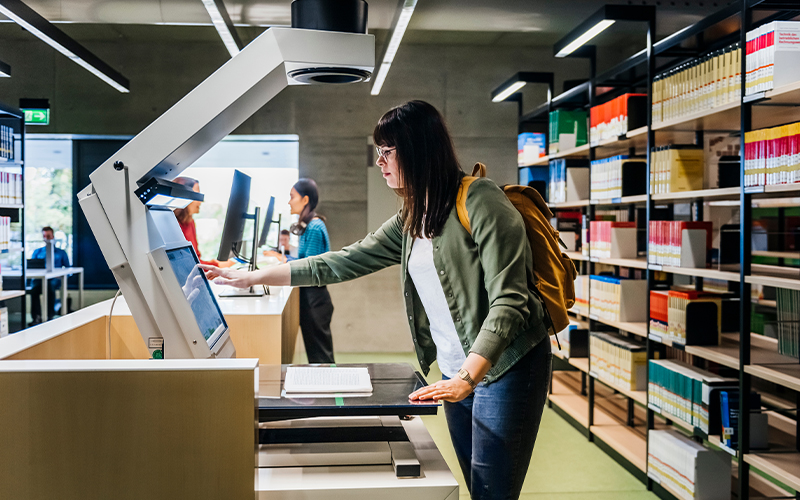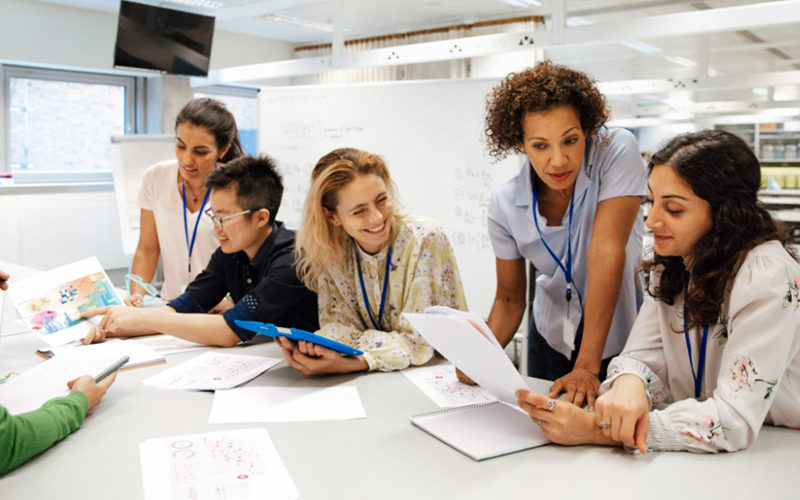The concept of gamified learning is built on the premise that people need and want challenges. We are hardwired to perform in a competitive environment. This is evidenced by a research outcome that proved an 89% increase in student performance with gamified elements employed.
Gamifying education is not a limited paradigm shift either. Businesses have invested heavily in gamifying the employee onboarding process and training. As a result, the global gamification market is expected to be at a staggering $30.7 billion by 2025. Infosys BPM provides a simulation-based gamified learning design with the Infosys Enterprise Gamification Platform to ensure participant engagement.
Benefits of gamified learning
Whether it is educational organisations or corporations choosing gamified learning, the goals must be clear. Various analytics, pre- and post-testing, and other methods can help gauge the required scale, model, and format of gamification. It will help to start by understanding the benefits of gamifying education:
- Increased engagement: Various game mechanics keep participants actively involved. These elements tap into participants’ natural drive, encouraging them to participate consistently and stay focused on their learning goals.
- Improved knowledge retention: Gamified learning encourages interaction with content, which aids memory retention. When students engage in challenges and complete tasks within a game-like framework, the repetitive, rewarding nature of the process helps solidify key concepts and ensures better recall.
- Enhanced motivation: Gamification fuels intrinsic and extrinsic motivation. Participants are motivated by earning rewards, levelling up, or achieving higher rankings, which creates a sense of accomplishment.
- Collaboration and teamwork: Many gamified learning activities involve group challenges, which foster collaboration and teamwork. Participants often work together to solve problems or complete tasks, improving communication skills and promoting a sense of community.
- Immediate feedback: One of the key advantages of gamifying education is the instant feedback it provides. Learners can see the results of their efforts in real time, helping them identify areas for improvement.
Gamified learning: Examples
Gamification has transformed learning across various fields, blending fun and engagement with education and skill development. Here are some notable examples of gamification in action:
Duolingo
Duolingo revolutionises language learning with gamified elements like streaks, badges, and leaderboards. By earning points and levelling up, learners stay motivated and engaged in daily practice. This interactive structure has made Duolingo a global favourite, driving both learning consistency and enjoyment.
Kahoot!
Kahoot! brings classrooms to life. Teachers create quizzes and challenges, and students compete using leaderboards and a “ghost mode” to improve their scores. This method fosters healthy competition, ensures better retention, and encourages participation.
Khan Academy
Khan Academy incorporates points, badges, and progress indicators into its educational platform. Learners track their achievements while mastering subjects at their own pace, turning challenging topics into rewarding journeys.
Google Read-Along app
Designed in 2019 to improve literacy among young learners, Google Read-Along employs points and badges to make reading fun. This gamified learning aid helps children build confidence while interactively tracking their progress.
Adobe
In corporate learning, Adobe gamified its onboarding process with quizzes, badges, and challenges. This strategy boosted training completion rates by 20% and reduced onboarding time by 30%, demonstrating the effectiveness of gamification in professional development.
Gameplan to ensure victories
Effective gamification relies on well-crafted strategies that align with learners’ needs and objectives. Here are key strategies to implement gamification in learning environments:.
Reward systems
Points, badges, and virtual incentives are all good tools to celebrate achievements. Reward systems motivate learners to stay engaged and work toward goals. For instance, using badges to recognise progress fosters healthy competition and encourages continuous learning.
Leaderboards
Leaderboards add an element of competition, driving learners to perform better individually and in teams. Ranking learners based on their performance boosts engagement and cultivates leadership and teamwork.
Interactive challenges
The challenges that a gamified learning platform offers, by design, require learners to employ problem-solving skills. These tasks make learning hands-on and immersive, helping learners retain information better. For example, math puzzles or historical quests encourage critical thinking and creativity.
Progress tracking and feedback
Visual tools like progress bars and milestones make learning tangible. Immediate feedback on tasks and quizzes helps learners understand their strengths and areas for improvement, fostering a growth mindset.
Storytelling and narratives
Integrating compelling storylines into lessons captivates learners’ attention. Narratives enhance emotional connections to the content, making learning more enjoyable and memorable.
Real-world simulations
Real-world scenarios bridge the gap between theory and application. Simulations, like managing virtual tasks or experimenting with practical problems, provide context and relevance, preparing learners for real-life challenges.
Gamification in learning transforms traditional education by making it more engaging, interactive, and effective. As demonstrated by various platforms, gamification drives both individual achievement and collaborative learning. It also enhances overall educational outcomes. When implemented thoughtfully, gamification boosts motivation and promotes a culture of continuous learning and improvement.
By embracing gamification strategies, businesses and institutions will create dynamic, engaging, and personalised learning experiences.









